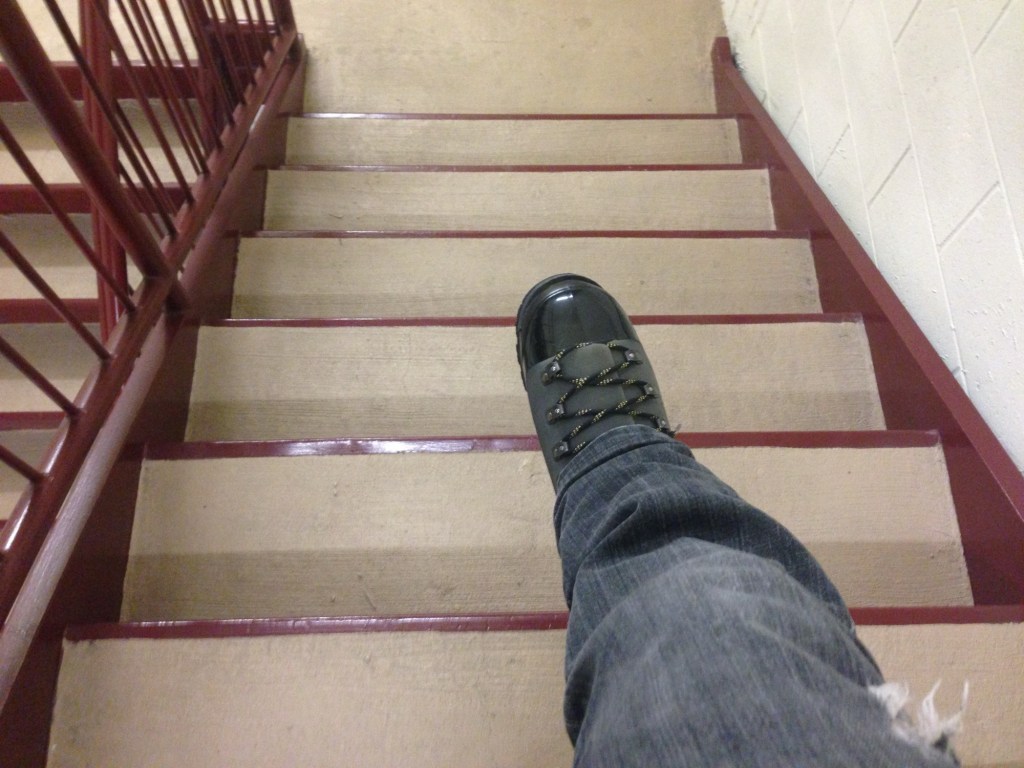My “about me” page of this blog, which I wrote back in 2014, describes me as a “mid-50s” person. Born in 1961 and about to turn 58, I’m hoping I still qualify. But one of the things I’ve noticed as I take this journey from swamp to summit – which started when I was 50 – is the subtle or not so subtle changes in my training activities over the ages. Some due to sheer boredom. Some, unfortunately, due to years, painful as that is to admit.

When I first embarked on this journey, I was a regular yoga attendee, both Bikram and what I call “regular” yoga, two to three times a week. Then we decided to climb Mt. Kilimanjaro in 2011 for my 50th birthday and it became clear yoga alone wasn’t going to get me to the top of that mountain. Hence, my now famous office building stair climbing regime. That’s the one thing that’s remained constant, even though my office has moved to a different floor and side of the building, which mysteriously is one extra floor in height.

But the rest of it? Not so consistent. After our experience climbing Mt. Elbrus, I realized I needed way more heavy duty cardio. (See Steps on the Summit for our adventures on Europe’s highest peak.) Thus, I swallowed my disdain for running and embarked on a regime of a long (I worked my way up to 6-7 miles) run once a week, combined with a treadmill 5K at least once a week. But then my Wednesday yoga class was pushed to an earlier time and it became well nigh impossible to fit in a 5k between work and yoga. And then, after Stok Kangri, I realized I was all out so bored with running I couldn’t stand it, not to mention I was starting to obsess over my pace to the point it was becoming really stressful. Thus, my invention of the walk – run. Letting Up the Pressure – Running and Walking Through the Holidays – memorializes this latest training technique!
Bikram fell victim to the closing of the studio (which probably wasn’t helped by Bikram’s own fall from grace). Although I still love it, and there are a few classes here and there, the times are terrible, so I rarely make it. Instead I’ve picked up Barre to accompany my yoga classes. Of course, I do it at the Y, so there’s no real barre and we have to use chairs. I can only imagine what we look like to onlookers as we plié and relevee clinging onto the backs of our chairs.
Weights have been an off and on thing. Right now they are on – I learned after Kilimanjaro that the only way to strengthen your knees is to strengthen your quads and I think there is going to be a high need for strong knees in Albania’s Accursed Mountains.

But my newest invention is a treadmill variation that I discovered while watching mountaineer and photographer Cory Richards’ training regime on Instagram. He put the treadmill on its highest 15% setting, strapped on a heavy pack, and proceeded to walk uphill for hours at about 2.8 miles an hour, not holding on. At that incline, if you tried going any faster without holding on you’d probably fall off. Now, my dirty little treadmill secret had been that I was a “holder”. I reasoned it was all about the legs, right? But when I tried Cory’s technique , sans pack, no hands, I suddenly realized I was actually using a whole different set of muscles – and they were the ones you use on a real live mountain.
So I guess the whole point of this is ebb and flow and just go with the tide, to keep the metaphor going. Training is going to change depending on your age, the boredom factor, and where you’re going. I tend to be a creature of habit; at least I’ve learned a bit of flexibility on my swamp to summit journey.













